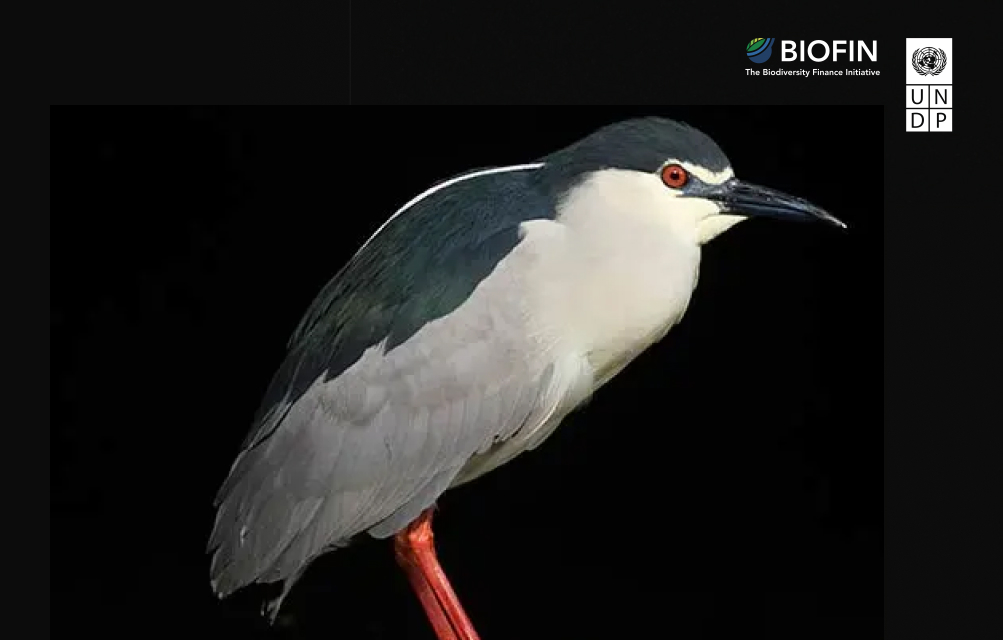
The release of the guideline "The Nature of Subsidies: A step-by-step guide to repurpose subsidies harmful to biodiversity and improve their impacts on people and nature" by the Biodiversity Finance Initiative (BIOFIN) of the United Nations Development Programme (UNDP) marks a pivotal moment in the pursuit of a sustainable and resilient future.
The guidelines spotlight the urgency to reimagine subsidies for positive impacts on nature, society, and fiscal responsibility, and provide a step-by-step approach to assist countries in achieving this.
At a time when nearly a million species hover on the precipice of extinction due to human activities, the guidelines underscore the inextricable link between economic systems and ecosystem health. As the Amazon rainforest, coral reefs, and boreal forests teeter on irreversible tipping points, the guideline calls for a paradigm shift that concurrently reverses environmental degradation and supports sustainable livelihoods for communities.
Amidst the global call to action, the guidelines uncover a sobering reality: the adverse environmental consequences of subsidies often remain hidden or not assessed even if we know that many of them have strong negative impacts on nature. For instance, the agricultural sector receives approximately US$500 billion in potentially harmful support, perpetuating habitat destruction and land degradation. Similarly, subsidies in the fishery sector, ranging from US$7 to 35 billion annually, exacerbate pollution and over-exploitation of marine resources.
The guideline introduces a comprehensive framework to address this urgent challenge. Through a step-by-step approach, governments, businesses, and policymakers can assess, repurpose and monitor subsidies to achieve biodiversity-positive outcomes.
The outlined steps, corroborated by case studies from various countries, include:
- Identification and Assessment: Thoroughly identify and assess subsidies and government support likely to have harmful impacts on nature. The report encourages quantifying the extent of the negative impact and the cost of the subsidy where possible.
- Multidimensional Redesign Options: Define multiple redesign options through a multidimensional analysis that comprehensively considers social, gender equality, environmental, economic, and political economy concerns throughout the re-design and transition process.
- Action Plan Formulation: Develop action plans to redesign prioritized subsidies, outlining multiple scenarios. These action plans provide a structured framework for the transformation of harmful subsidies and the enhancement of positive attributes aligned with all Sustainable Development Goals (SDGs).
"The report offers a blueprint for governments and stakeholders to navigate a path towards a more sustainable future" commented Mrs Midori Paxton, Director of the UNDP Nature Hub.
To access the complete report and delve into its pioneering recommendations, click here
To access the video produced by UNDP-BIOFIN on the topic, click on the links below:
- French: https://youtu.be/JrwTSzVw18o
- Spanish: https://youtu.be/GeWlKJzQ7r4
- Russian: https://youtu.be/9Lv443WjhkY
To access the recording of the webinar, click on the links below:
- English: https://youtu.be/Lzf0dE04_rQ
- French: https://youtu.be/r8lHX0xkrDw
- Spanish: https://youtu.be/c41nTNDcjdM
About UNDP-BIOFIN:
BIOFIN was initiated ten years ago at the CBD COP 11, by UNDP and the European Commission, in response to the urgent global need to divert more finance from all possible sources towards global and national biodiversity goals.
Now present in 41 countries and supported by the European Union and the Governments of Belgium, Germany, Switzerland, Norway, Flanders, France, United Kingdom and Canada, BIOFIN is working with governments, civil-society, vulnerable communities, and the private sector to catalyse investments in nature. Investments that not only protect biodiversity, but let it flourish. Investments that create jobs and opportunities for communities. Investments that secure a sustainable future for people and the planet.
Categories
Archives
- April 2024 (5)
- March 2024 (3)
- February 2024 (6)
- January 2024 (3)
- December 2023 (1)
- November 2023 (7)
- October 2023 (5)
- September 2023 (2)
- August 2023 (3)
- July 2023 (1)